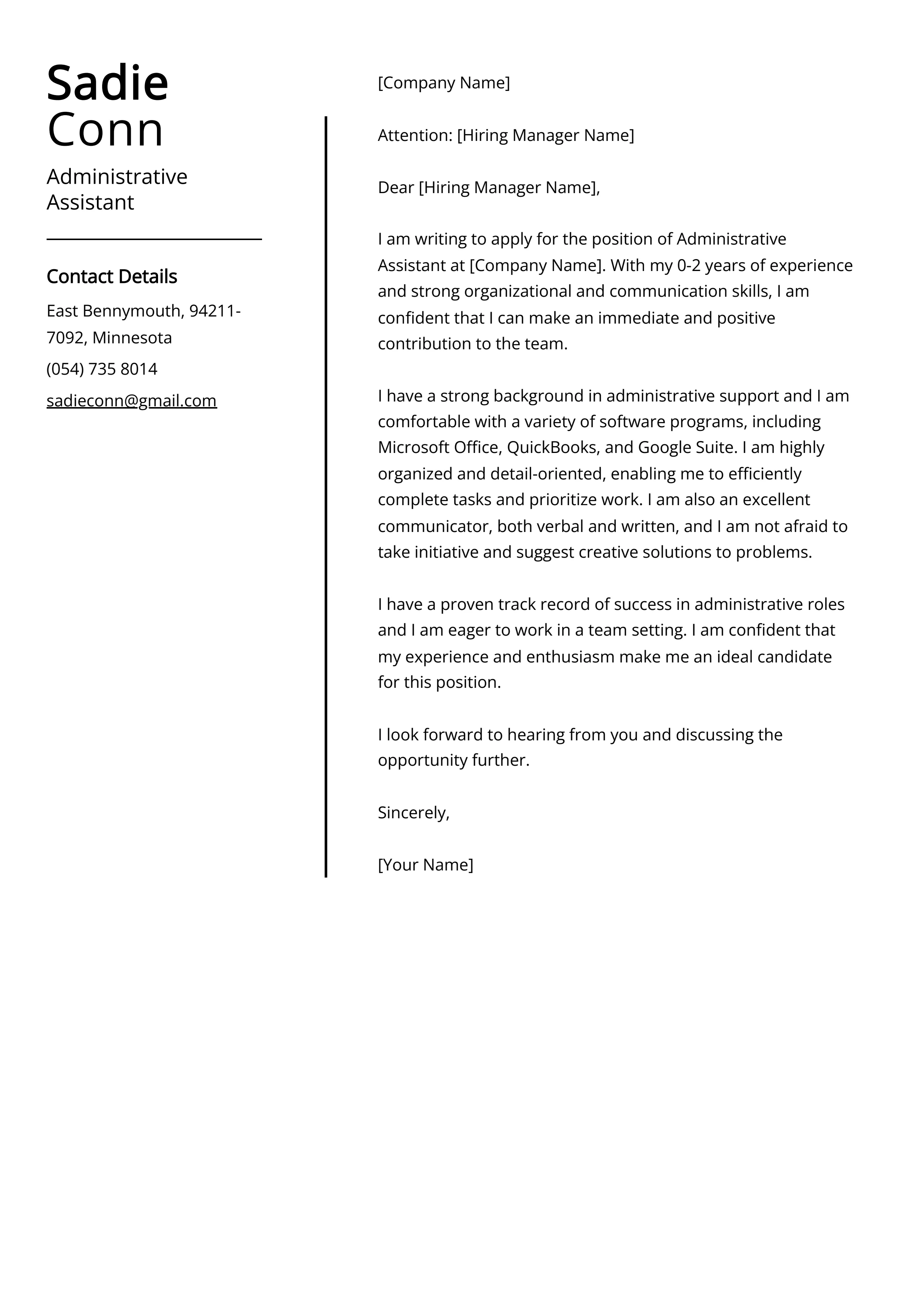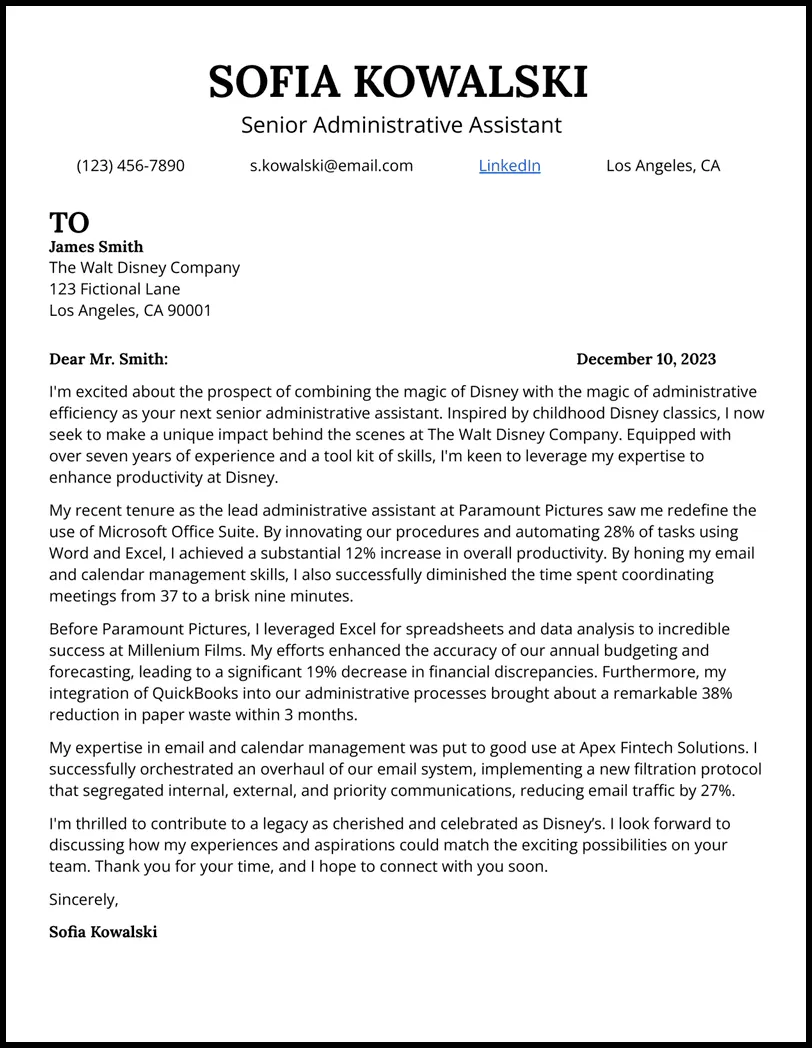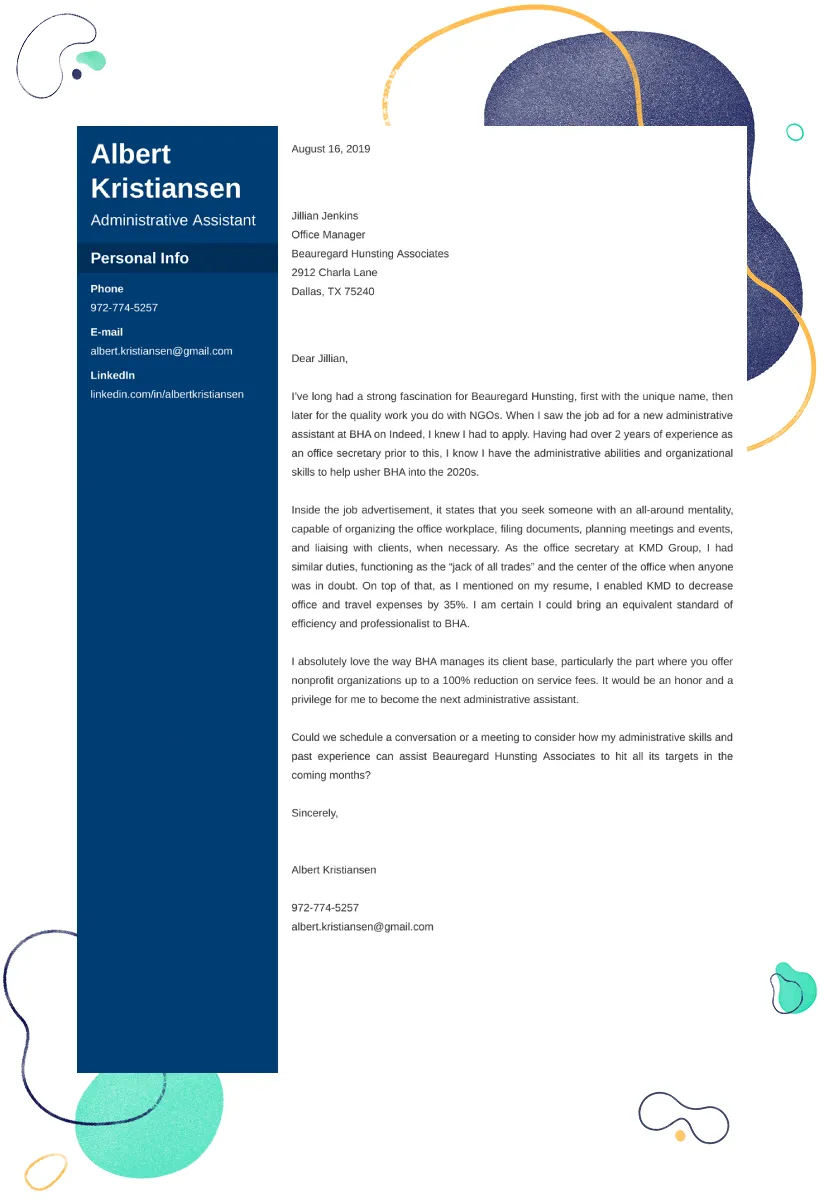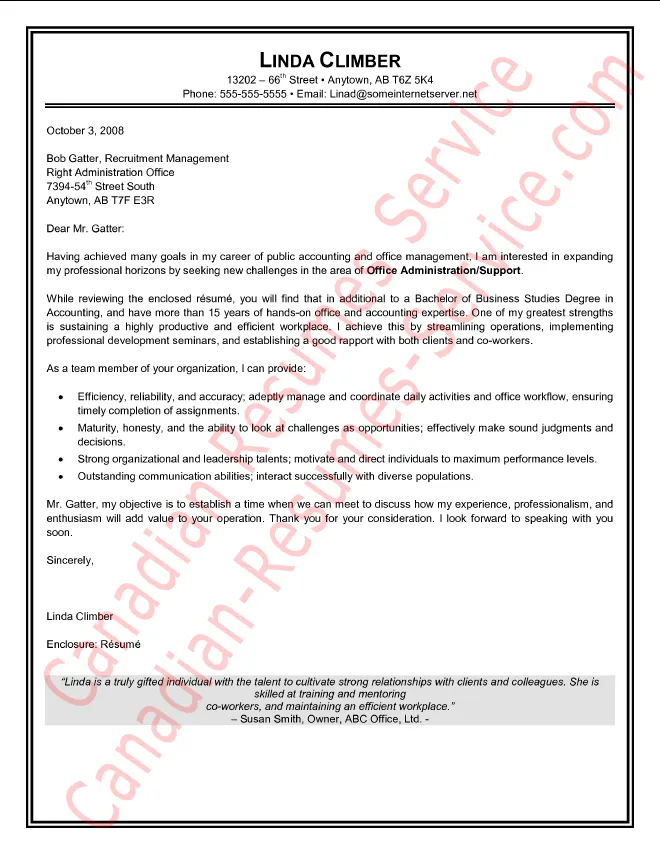Cover Letter: Administrative Assistant [Overview]
An administrative assistant cover letter is a crucial document that accompanies your resume when applying for an administrative assistant position. It serves as your first impression, allowing you to showcase your skills, experience, and personality to the hiring manager. A well-crafted cover letter can significantly increase your chances of securing an interview. This guide provides tips and tricks to create a compelling cover letter that highlights your qualifications and makes you stand out from other applicants. A strong cover letter not only summarizes your key skills but also demonstrates your understanding of the role and your enthusiasm for the opportunity.
Key Components of a Winning Administrative Assistant Cover Letter
A successful administrative assistant cover letter comprises several essential elements that work together to present a complete picture of your qualifications. These components include proper contact information and salutations, a captivating introduction, a detailed section highlighting your relevant skills and experience, a section dedicated to showcasing your achievements, and a strong, enthusiastic conclusion. Moreover, the best cover letters are tailored to each specific job application and meticulously proofread to eliminate errors. Each element should be carefully crafted to ensure your cover letter is both informative and persuasive. A well-structured cover letter will capture the reader’s attention and encourage them to read your resume.
Contact Information & Salutations

Start your cover letter by providing your contact information, including your full name, phone number, email address, and LinkedIn profile URL (if applicable). This ensures the hiring manager can easily reach you. Follow this with the date and the hiring manager’s name and title, if known; if not, use a general salutation like “Dear Hiring Manager.” Addressing the hiring manager by name shows that you’ve taken the time to research the company and the specific role, which can make a positive impression. Using professional and respectful language is key to creating a positive first impression, so make sure you are formal.
Writing the Perfect Introduction
The introduction is your opportunity to grab the reader’s attention. State the position you are applying for and where you found the job listing. Briefly mention why you are interested in the role and the company. Highlight one or two key skills or experiences that make you a strong candidate. This section should be concise and compelling, setting the tone for the rest of your letter. Keep the opening brief and focused on your main selling points. Your goal is to spark the hiring manager’s interest and encourage them to read further, which is why it is important to ensure you give off a good first impression.
Highlighting Relevant Skills and Experience
This is the core of your cover letter, where you detail your skills and experience relevant to the administrative assistant position. Use specific examples to illustrate your abilities and achievements. Discuss how your past experiences have prepared you for the role, emphasizing skills that align with the job description. This section should provide concrete evidence of your capabilities. Provide examples, using the STAR method (Situation, Task, Action, Result) to clearly explain how you’ve handled challenges and achieved positive outcomes. The goal is to show the hiring manager what you have to offer and convince them you are the best person for the job.
Administrative Skills

Administrative assistants need a wide range of skills. Highlight your proficiency in areas such as scheduling, calendar management, data entry, and document preparation. Mention any experience you have with office equipment, such as printers, scanners, and phone systems. If you have experience with specific software programs, such as Microsoft Office Suite, Google Workspace, or CRM software, be sure to list them. Provide examples of tasks you’ve successfully managed, such as organizing meetings, preparing presentations, or managing travel arrangements. Detail your skills and give the hiring manager a reason to think you will thrive.
Communication Skills
Effective communication is vital for an administrative assistant. Describe your written and verbal communication skills, including your ability to draft emails, letters, and reports clearly and concisely. Emphasize your interpersonal skills and your ability to interact professionally with colleagues, clients, and visitors. Mention your experience answering phones, taking messages, and handling correspondence. Illustrate your ability to actively listen, understand instructions, and convey information accurately. Showcase situations where your strong communication skills helped resolve issues or improve team collaboration. By detailing your communication skills, you show that you are capable of representing your company effectively.
Organizational Skills
Administrative assistants need to be highly organized. Highlight your organizational skills, including your ability to manage multiple tasks, prioritize responsibilities, and maintain accurate records. Describe your experience with filing systems, record keeping, and managing deadlines. Provide examples of how you have organized projects, managed schedules, or improved office efficiency. Emphasize your attention to detail and your ability to maintain a clean and organized work environment. Illustrate how your organizational skills have contributed to the smooth operation of previous workplaces. Ensure the employer knows your worth and organizational capabilities.
Showcasing Achievements & Accomplishments

Instead of merely listing your duties, focus on your achievements and the results you’ve delivered in previous roles. Quantify your accomplishments whenever possible to demonstrate the impact you made. This is the chance to stand out from the competition. Use action verbs to describe your contributions and accomplishments. Mention any awards or recognition you have received, or any instances where you exceeded expectations. Highlighting achievements shows the hiring manager that you are a high-performing individual. Be sure to use compelling action verbs and measurable results.
Quantifiable Achievements
Whenever possible, quantify your achievements. Use numbers, percentages, or specific data to illustrate the impact of your work. For example, instead of saying “Improved office efficiency,” state “Reduced office supply costs by 15% through strategic purchasing.” Instead of “Managed schedules effectively,” write “Managed schedules for a team of 10+, ensuring 100% meeting attendance.” Quantifiable achievements provide concrete evidence of your capabilities and make your cover letter more persuasive. By providing statistics, you prove your value as an employee.
Tailoring the Cover Letter to the Job
Customize your cover letter for each job application. Review the job description carefully and identify the key skills and requirements the employer is seeking. Adjust your cover letter to reflect these needs, emphasizing the skills and experiences that are most relevant to the specific role. Use the same keywords and phrases used in the job description to demonstrate that you are a good fit. Avoid using a generic cover letter, as it may appear impersonal and show a lack of attention to detail. Tailoring your cover letter shows you’ve put thought into your application and understand the role.
Researching the Company & Role

Before you write your cover letter, research the company and the specific role you are applying for. Understand the company’s mission, values, and recent projects. This knowledge will help you tailor your cover letter and demonstrate your genuine interest in the company. Look at the job description, paying close attention to the specific skills and qualifications they are seeking. Use this information to emphasize your relevant experience and explain why you are a good fit. Showing that you have taken the time to research the company proves that you are serious about being employed.
Using Keywords Effectively
Many companies use Applicant Tracking Systems (ATS) to screen resumes and cover letters. To increase your chances of getting noticed, incorporate relevant keywords from the job description into your cover letter. Focus on the core skills and requirements listed in the job posting. Use these keywords naturally throughout your letter, but avoid keyword stuffing. Balance keyword integration with clear, concise writing that highlights your qualifications and enthusiasm. Doing this allows the ATS to see your qualifications and will hopefully give you the interview.
Concluding Your Cover Letter
Conclude your cover letter by summarizing your interest in the position and the company. Reiterate your key qualifications and express your enthusiasm for the opportunity. Thank the hiring manager for their time and consideration. Include a call to action, such as stating that you are available for an interview and look forward to hearing from them soon. Your conclusion should leave a positive and lasting impression, reinforcing your suitability for the role. It is key to summarize your top qualifications and make sure the hiring manager knows you are eager to get the job.
Expressing Enthusiasm and Call to Action

End your cover letter by expressing your genuine enthusiasm for the position and the company. Show that you are excited about the opportunity to contribute your skills and experience. Include a clear call to action, such as stating that you are available for an interview and look forward to discussing your qualifications further. Providing a call to action can give you a clear advantage over the competition. Reiterate your interest and desire to be employed and leave the hiring manager with a clear next step.
Proofreading and Formatting Tips
A polished cover letter is essential. Proofread your cover letter carefully for any grammatical errors, typos, or formatting issues. Use a professional and easy-to-read font, such as Times New Roman, Arial, or Calibri. Ensure your letter is well-formatted, with clear spacing, consistent margins, and a professional layout. Consider having a friend or career advisor review your cover letter to provide feedback and catch any errors you may have missed. Before submitting your cover letter, ensure all the details are correct, including the name of the hiring manager and the company name. Errors are a big turn-off and can ruin your chances of getting the job.
Formatting the Cover Letter
The formatting of your cover letter is important. Use a professional font such as Times New Roman, Arial, or Calibri, in a readable size (11 or 12 points). Set your margins to 1 inch on all sides. Use single spacing within paragraphs and double spacing between paragraphs. Left-align your text and avoid justifying it. Ensure that your contact information, the date, the hiring manager’s information, and your closing are all properly aligned. Maintain a clean and organized layout to make your letter easy to read. Pay attention to the overall appearance of your letter, as this can reflect your attention to detail.
Proofreading for Errors

Proofreading is a critical step in the cover letter writing process. Carefully review your cover letter for any grammatical errors, typos, spelling mistakes, or punctuation errors. Read your letter aloud to check for awkward phrasing or unclear sentences. Use a grammar and spell-checking tool, but don’t rely solely on these tools; they may not catch all errors. Ask a friend, family member, or career advisor to proofread your cover letter for a fresh perspective. A polished and error-free cover letter demonstrates your professionalism and attention to detail.
Administrative Assistant Cover Letter Best Practices
Creating an administrative assistant cover letter requires careful attention to detail and a strategic approach. Remember to start with a compelling introduction, highlight your relevant skills and experience, quantify your achievements whenever possible, and tailor your letter to each specific job application. Always proofread and format your cover letter to ensure it is error-free and easy to read. By following these tips and best practices, you can create a cover letter that effectively showcases your qualifications and increases your chances of landing an interview. Remember that a well-crafted cover letter is an essential tool in your job search, representing your skills and qualifications.
